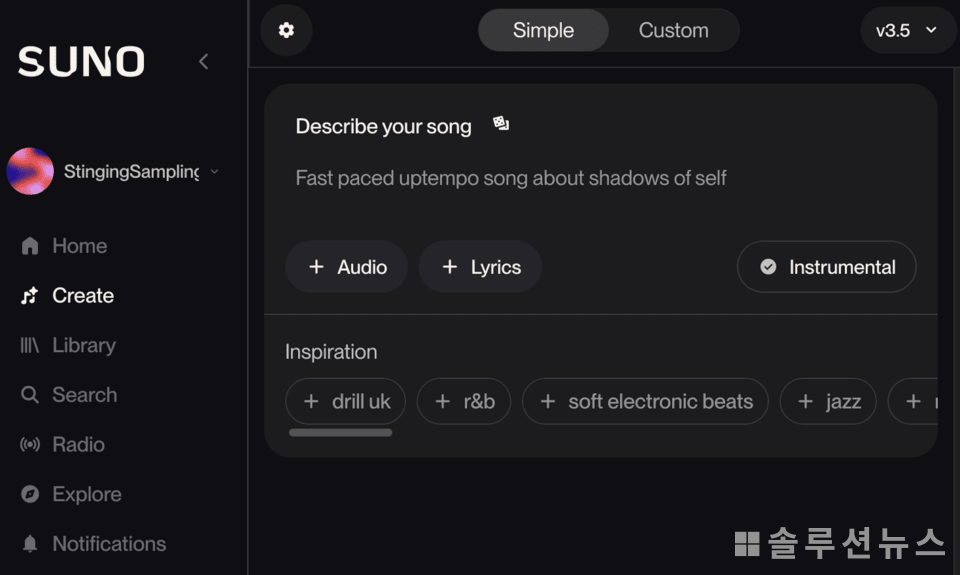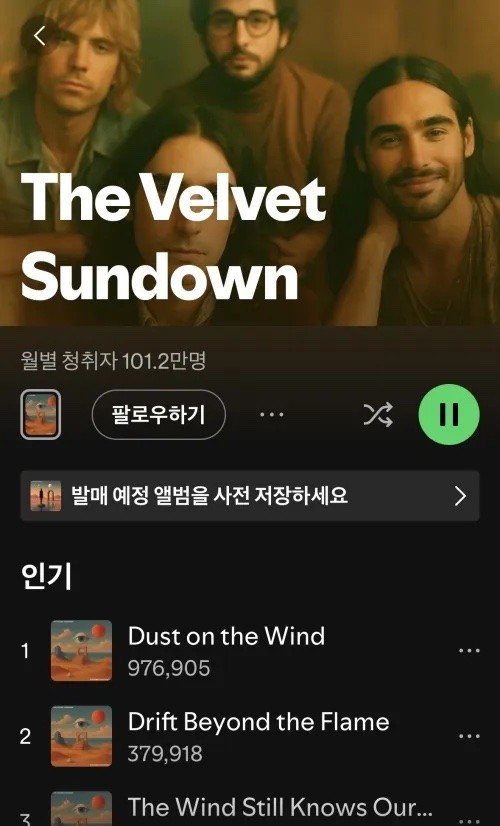A person who had never touched an instrument in London, England, has successfully signed a record deal. The protagonist is Oliver McCann, a former visual designer, who creates music using generative AI music tools under the stage name ‘imoliver.’
The song he released last year was streamed over 3 million times, garnering much attention. This achievement eventually led to a formal contract with the independent label Hallwood Media. It marked the first instance of a creator without traditional instrument or music education securing a record deal through AI.

The spread of AI music is not limited to individual cases. Generative AI tools like Suno and Udio allow anyone to create songs with simple inputs. Users can specify lyrics or mood, and the system automatically completes the melody and arrangement. Visual materials like album covers can also be produced by AI.

The virtual band Velvet Sundown, formed in this way, received significant attention online. The song, lyrics, and album art were all generated by AI. However, concerns have emerged about the possible devaluation of music as low-quality content is mass-produced automatically.
France’s music streaming service Deezer announced that 18% of the songs uploaded daily to its platform are AI-generated music. However, the actual playback rate is very low, indicating that there are not many listeners. Major platforms like Spotify have not disclosed related statistics.
Major players in the global music industries, including Sony Music Entertainment, Universal Music Group, and Warner Records, have filed copyright infringement lawsuits against Suno and Udio. The German music collection society GEMA claimed that Suno generated songs similar to Lou Bega’s “Mambo No.5” and Alphaville’s “Forever Young,” resulting in legal action.
In the UK, over 1,000 musicians, including Kate Bush, Annie Lennox, and Damon Albarn, opposed an AI-related law amendment. In protest, they released a “silent album.” Meanwhile, artists like will.i.am, Timbaland, and Imogen Heap have accepted AI as a tool for music creation, showing differing stances.
Josh Antonuccio, the director of the Media School at Ohio University, noted, “AI music will grow exponentially in the future,” describing the current situation as being in an initial stage without legal standards.
The emergence of AI music poses structural challenges to the entire Korean music industry. K-pop has grown through meticulous planning, elaborate production processes, and massive investments, but AI can drastically reduce costs and time, fundamentally shaking traditional production systems.
K-pop has garnered global attention for its originality and completeness. However, if AI produces music en masse, it may become challenging to maintain its distinctiveness on the global stage. Particularly, if AI uses existing K-pop songs as learning materials, creators may find themselves embroiled in copyright controversies unwittingly, which could lead to international lawsuits.
The domestic system is also insufficient. There is no transparent disclosure of what data AI learned from, nor clear criteria for determining copyright infringement. Regulations outlining the rewards creators should receive have not been established. The current lack is likely to expand into disputes in the future. Considering K-pop’s international status, failing to set standards could place Korea at a disadvantage in the global market.
The solution lies in institutional arrangements and collaborative structures. With AI music already a part of the global music industry, Korea must quickly develop a response strategy. The key is balancing copyright protection and industrial innovation.
First, copyright standards need to be clearly established. It must be explicitly defined whether to recognize AI-created outputs as original works and how far to protect the rights of the original creators. Lawsuits that have already commenced in the US and Europe can serve as references when establishing institutional standards in Korea.
Another crucial task is the collaboration structure between creators and AI. Human creators should be responsible for key creative elements like lyrics and melodies, while employing AI for auxiliary processes such as arrangement, sound correction, and idea supplementation. If this structure is supported institutionally, it can protect the rights of creators while absorbing the advantages of AI industrially.
Educational reform is also urgent. Future generations are more likely to become familiar with AI-based music production than direct instrument playing. By systematically introducing AI utilization into music education, it can expand the creative base and maintain overall industry competitiveness. The educational direction must address how AI and human creation can coexist, beyond mere technical training.
In summary, AI music is a potential variable that can directly affect K-pop’s competitiveness. Although it may appear threatening for the time being, establishing institutional standards and collaborative frameworks could turn it into a new opportunity.
The domestic music industry must be prepared for copyright disputes while ensuring the future creative environment through education and policy. As K-pop has led the global music market, the solutions we provide are likely to become global standards.